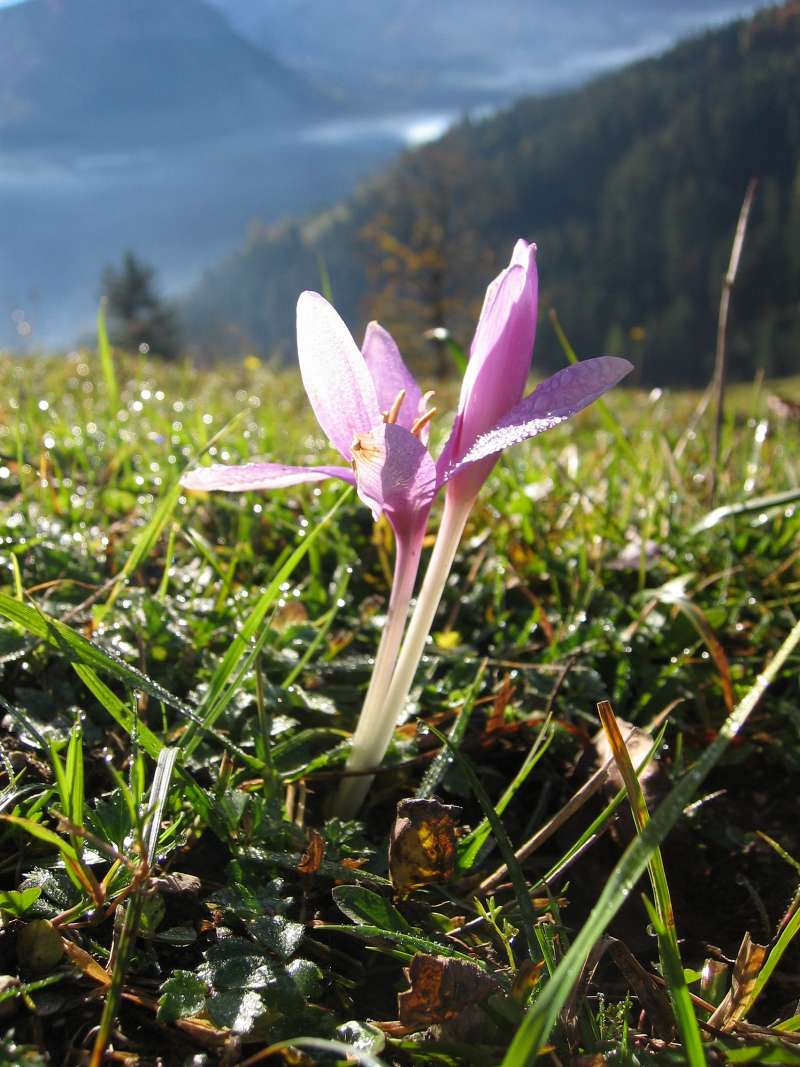 Our local colchicums bloomed recently (at least before it started snowing)...
Our local colchicums bloomed recently (at least before it started snowing)...Colchicum is a genus of flowering bulbs that's native to the Mediterranean coast. This picture shows Colchicum autumnale, aka the "autumn crocus," which, predictably, blooms in the fall and looks like a crocus.
This genus is also known for producing the poisonous alkaloid, colchicine. Used in various traditional remedies, this chemical has anti-inflammatory properties and prevents cell division by (for those of you who remember your basic biology) binding to tubulin and therefore preventing the assembly of the microtubule scaffolding required for mitosis.
The ability of this chemical to prevent cell division (but not DNA replication) can also be used to double the number of chromosomes within a plant cell, which has various applications in plant breeding. Although we can now use genetic engineering to add, remove or change genes in pretty much any way we want, traditionally, the only way to find new versions of genes (and therefore new phenotypic traits) was to wait for one to mutate naturally or use chemical tricks to induce mutations.
Many of our most important grain varieties were intentionally mutated with chemicals and ionizing radiation half a century ago. Because the mutations are random, they sickened or killed almost all of the exposed seedlings, but, just like occurs with natural selection, a few happened to change in beneficial ways. One such induced mutation is dwarfism, which produces short, strong plants that can carry heavy seed heads without falling over. In addition to mutating plants within controlled laboratory experiments, one of my professors told me that they actually left bags of wheat and corn seed on the decks of test ships (like those in this picture) when the U.S. government tested the atom bomb on Bikini Atoll!

Some activists have begun to refer to these mutated plants as "hidden GMOs." However, unlike true genetic engineering, "mutation breeding" breaks DNA in exactly the same types of ways that produce natural mutations - it's just much faster.
Over 2,500 of our crop varieties have been improved with this "mutation breeding." Currently many companies are using this technique to generate novel genetic diversity while avoiding the stigma and regulatory obstacles associated with genetic engineering - especially for crops like sunflower, which are often planted within pollination range of their wild relatives.

Another great example I like to use is red grapefruits like Ruby Star and Rio Red. I guess it makes sense that anything created with radiation is going to bother the same people that have problems with GMOs. I suppose next they'll go after the transposon mutants like orange Cauliflower.
ReplyDeletehttp://www.news.cornell.edu/stories/June07/orangeCauliflower.kr.html
Well what can we expect when all countries are testing nuclear bombs, something has to come out out of this mess.
ReplyDelete